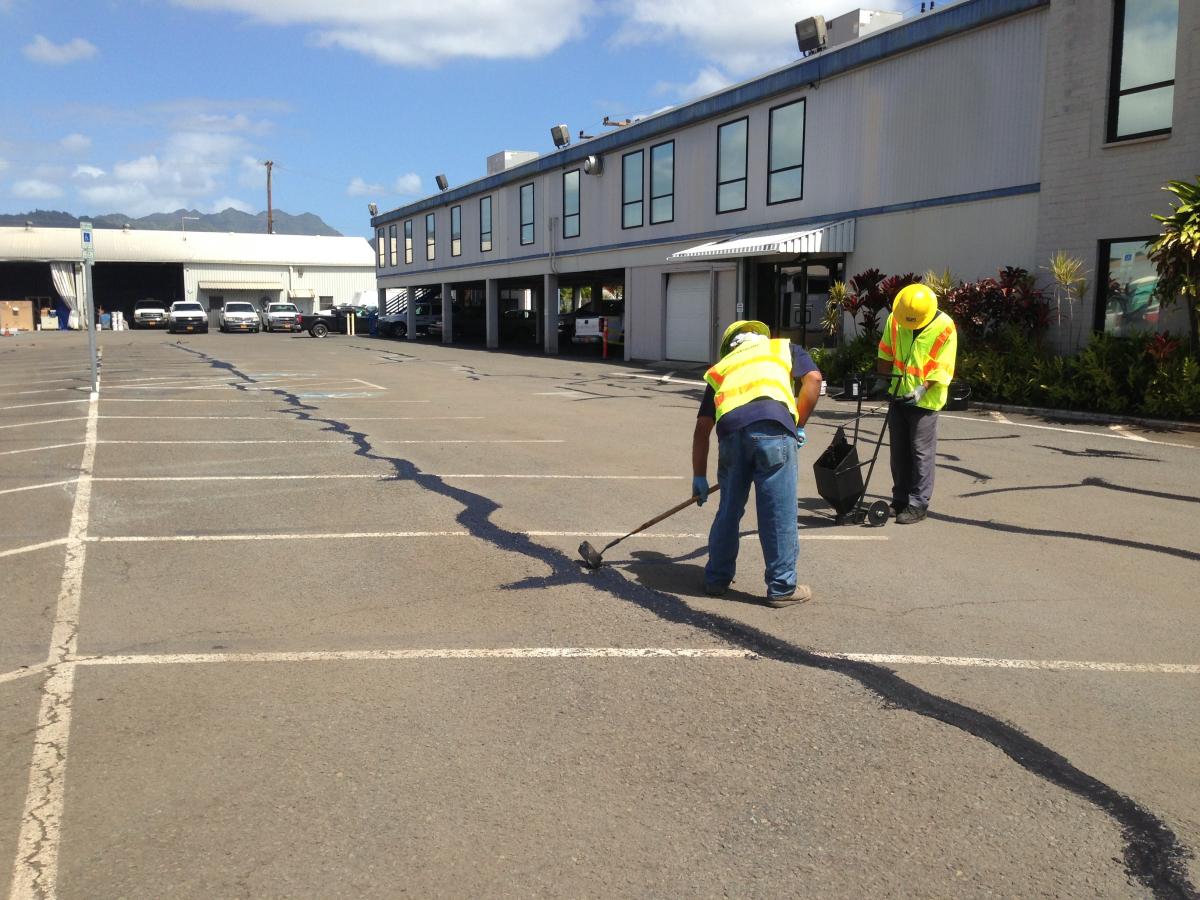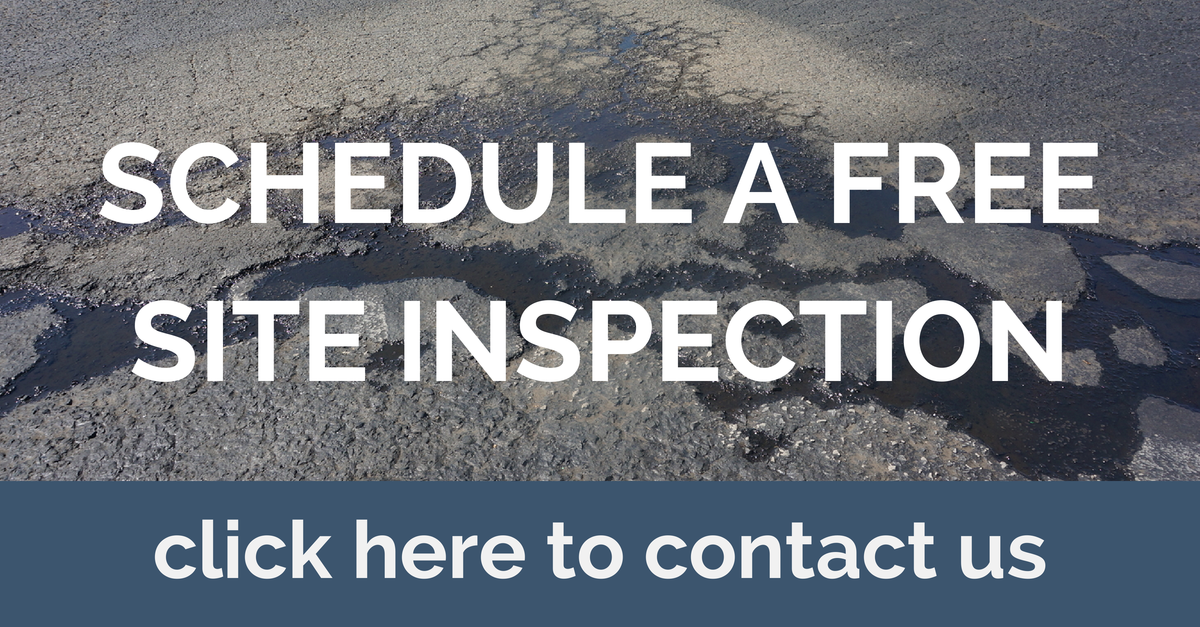
Last week we talked about 5 Causes of Asphalt Damage. Once you know what causes the damage, the next step is to take action to repair the damages and prevent future damages from occuring. Below are 4 essential asphalt repair and maintenance tasks you should be performing:
1. Sealcoating
A sealcoat is a liquid that is applied to the top of your asphalt to protect it from UV rays, oxidation, water penetration, and oil stains. It is the best asphalt preventative maintenance task you can perform because it maintains the current condition of your asphalt and prevents most causes of asphalt damage.
A sealcoat acts as a barrier between your asphalt and UV rays (think of a sealcoat like sunscreen and your asphalt as your skin). A sealcoat also fills tiny surface voids that would otherwise allow oxygen into your pavement which would lead to oxidation. If you can prevent oxidation of your asphalt, you won't have to worry about cracks and potholes.
Sealcoats also protect your asphalt from oil. Instead of eating away at your asphalt, oil will slowly degrade the sealcoat, which will allow you more time to address the oil stain before it reaches your asphalt.
2. Crack Fill
Crack filling is an important aspahlt repair task because if cracks are left untreated, water will be able to enter into your pavement and damage your base course. A damaged base course will lead to more cracks and eventually potholes. If you can fill the cracks, you'll prevent water from damaging your asphalt.
There are two types of crack fill; cold and hot. Hot crack fill requires special equipment to apply, but it adheres much better to the asphalt to form a tighter bond. Hot crack fill also dries much quicker than cold crack fill and will last longer. The advantage of cold crack fill is that it can be easily applied for the do-it-yourselfer.
3. Pothole Repair
Potholes are a result of a base course issue. Off-the-shelf pothole patches and repair products will fill the pothole and address the surface issue, but those products cannot fix the base course. In most cases, patching the pothole is acceptable. Cheaper pothole repair products will fill the hole, but will often allow water back into the pothole, which will result in you having to repair the pothole every so often. Other pothole repair products will fill the hole as well and prevent water penetration, a more "permanent-temporary" fix.
The only sure-fire way to fix a pothole is to replace the damaged area, recompact the base, and then repave.
4. Oil Stain Removal
There are many oil stain removal products that are designed to suck up the oil from the asphalt. However, most of those products become less effective the longer the oil is left to saturate into the asphalt. If oil is left untreated for a period of time, it will become so saturated in the asphalt that those products will not be able to absorb all of the oil.
If the oil is saturated in the asphalt, then to permanently fix the area, you'd need to treat it like a pothole: you would need to replace the damaged area, recompact the base, and then repave.
If you plan on implementing any of these tasks, I'd highly recommend attending our free seminar on March 13. We'll teach you what you need to consider when deciding if you'll attempt to perform these tasks yourself or if you'll hire a contractor.
 Cole is the Manager of GP Maintenance Solutions. He’s been involved in the asphalt paving/maintenance industry since 2006 and has experience in both estimating and project management for City, State, Federal, and Private projects. Connect with Cole on LinkedIn.
Cole is the Manager of GP Maintenance Solutions. He’s been involved in the asphalt paving/maintenance industry since 2006 and has experience in both estimating and project management for City, State, Federal, and Private projects. Connect with Cole on LinkedIn.

